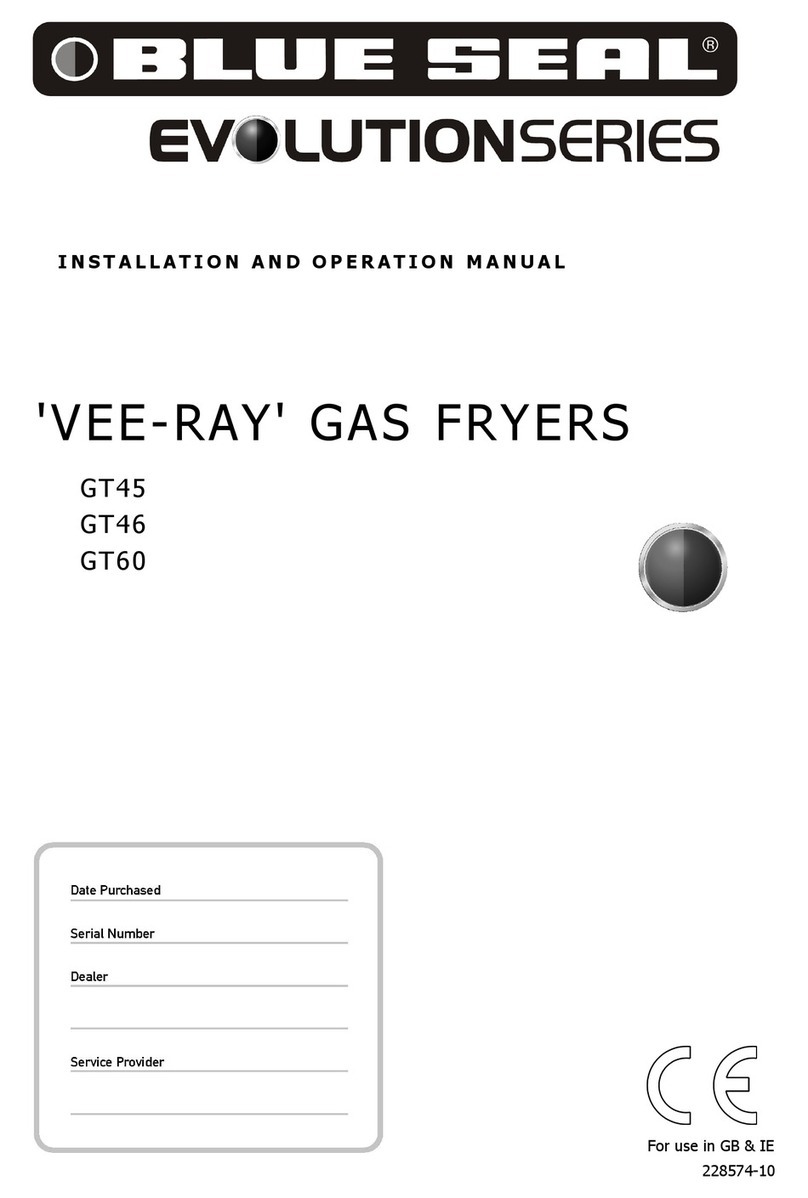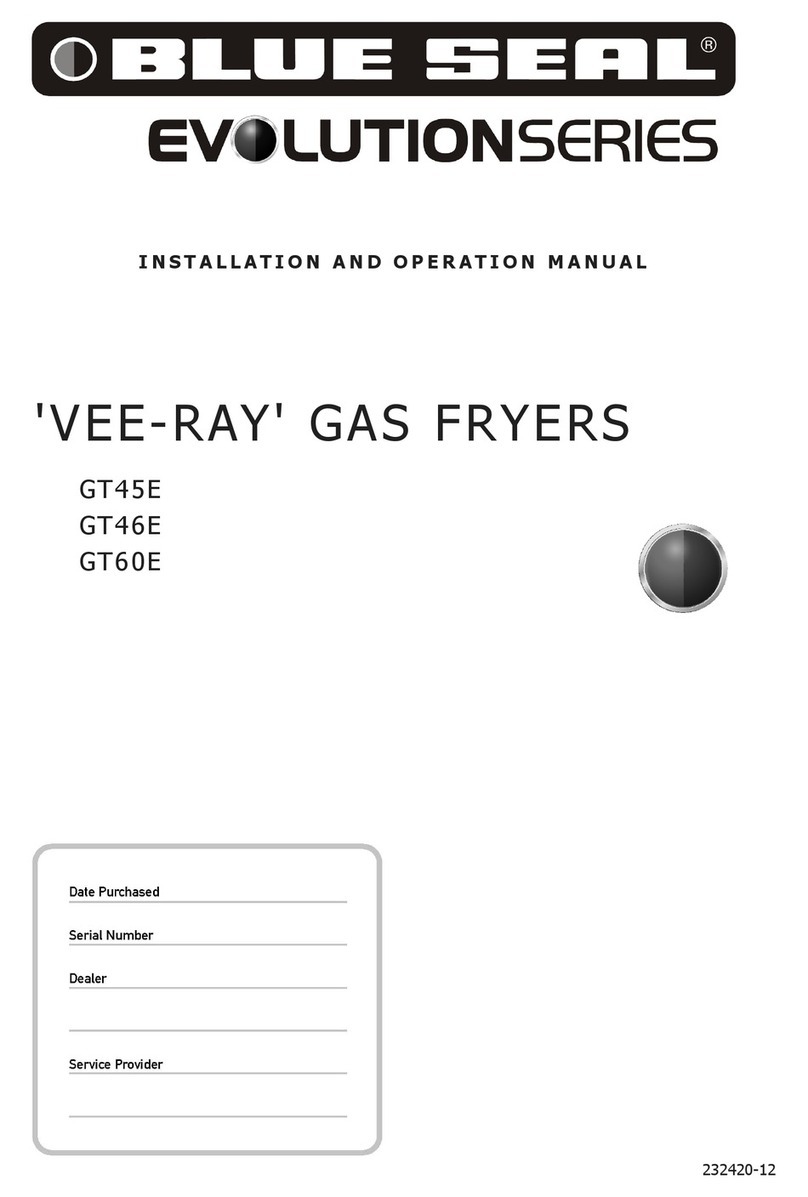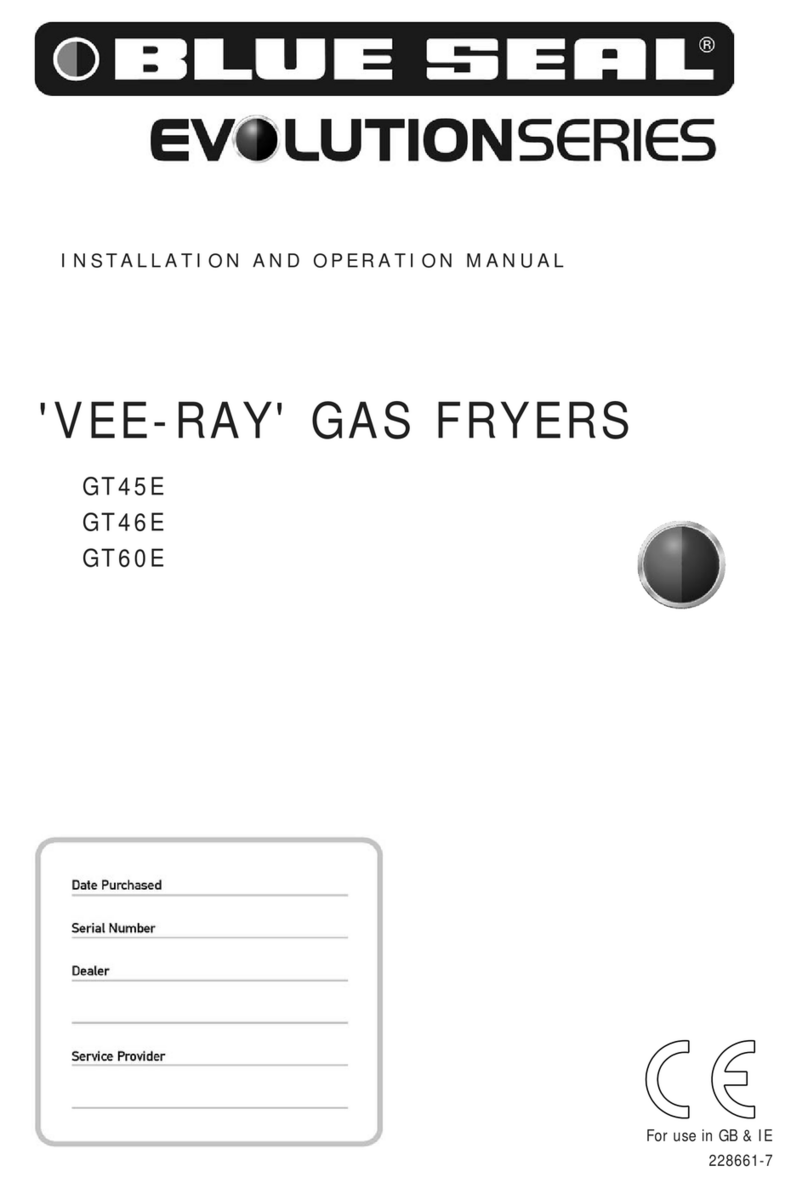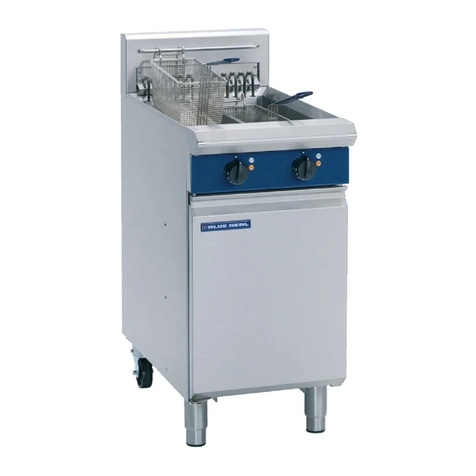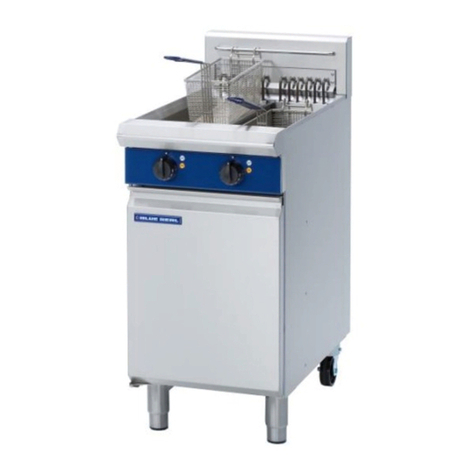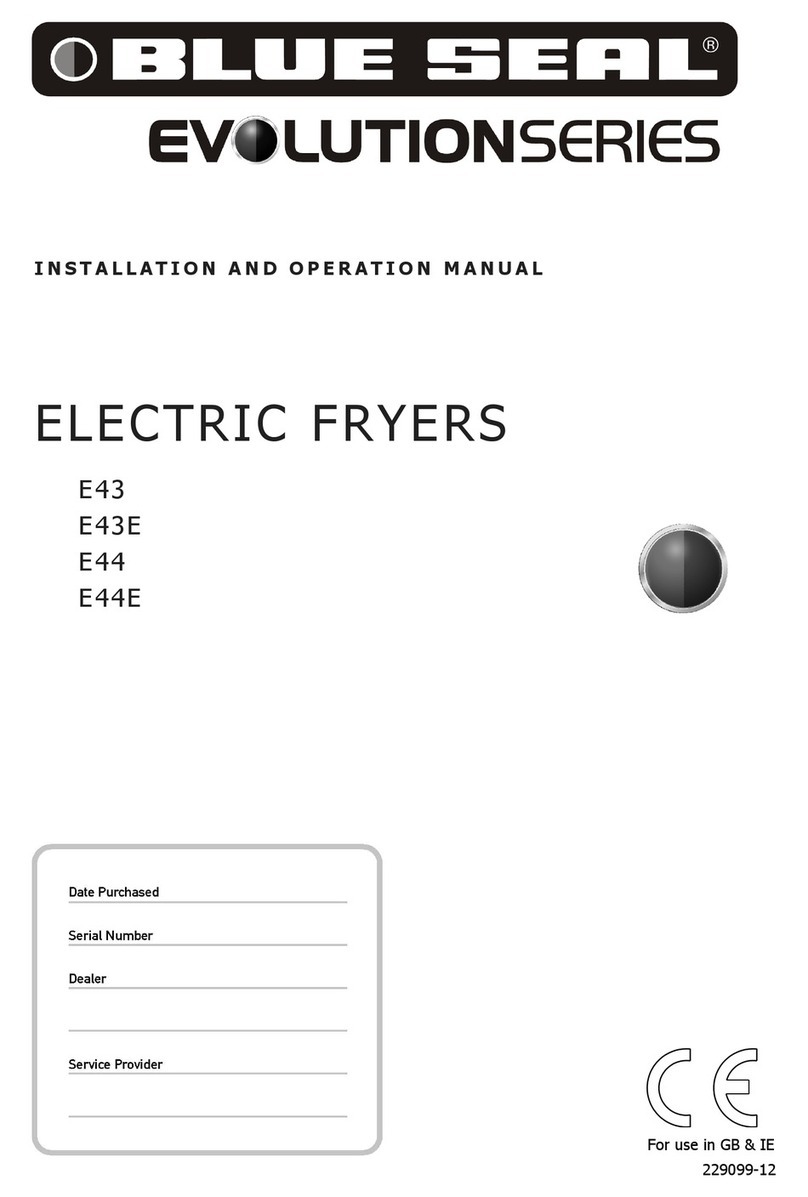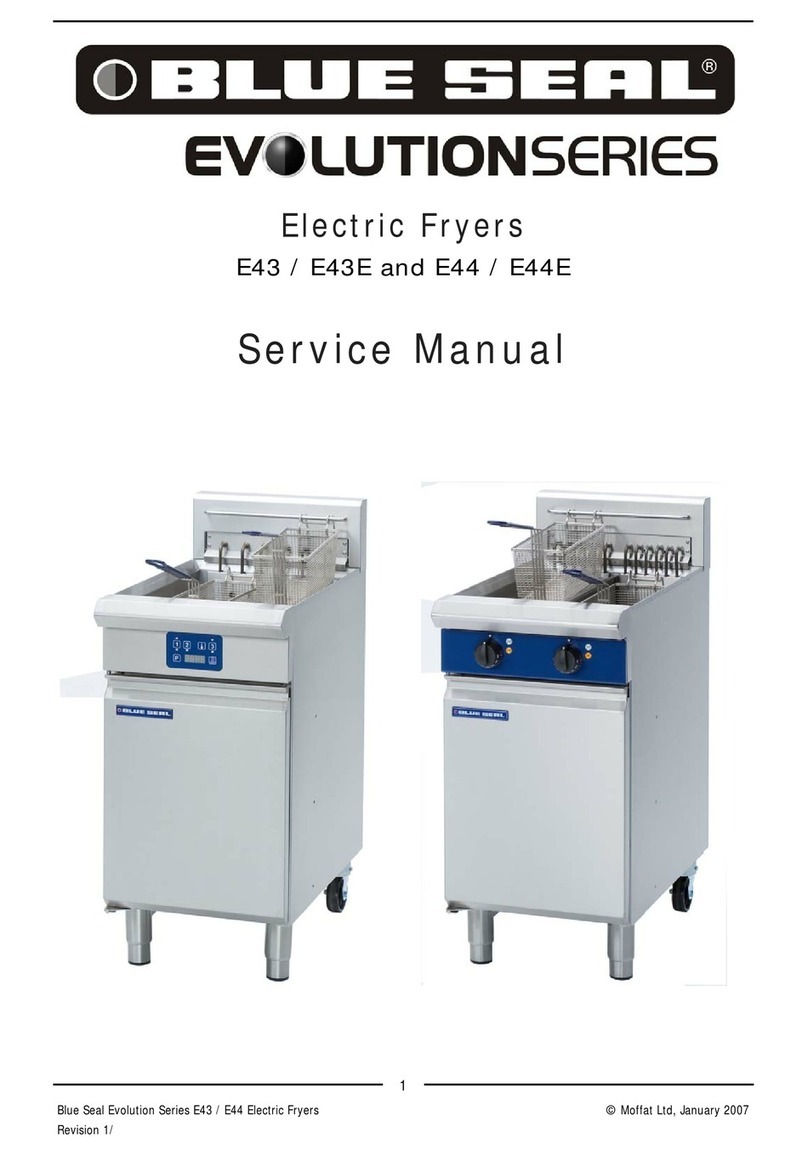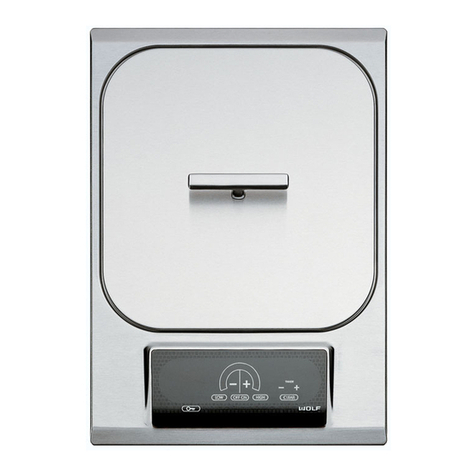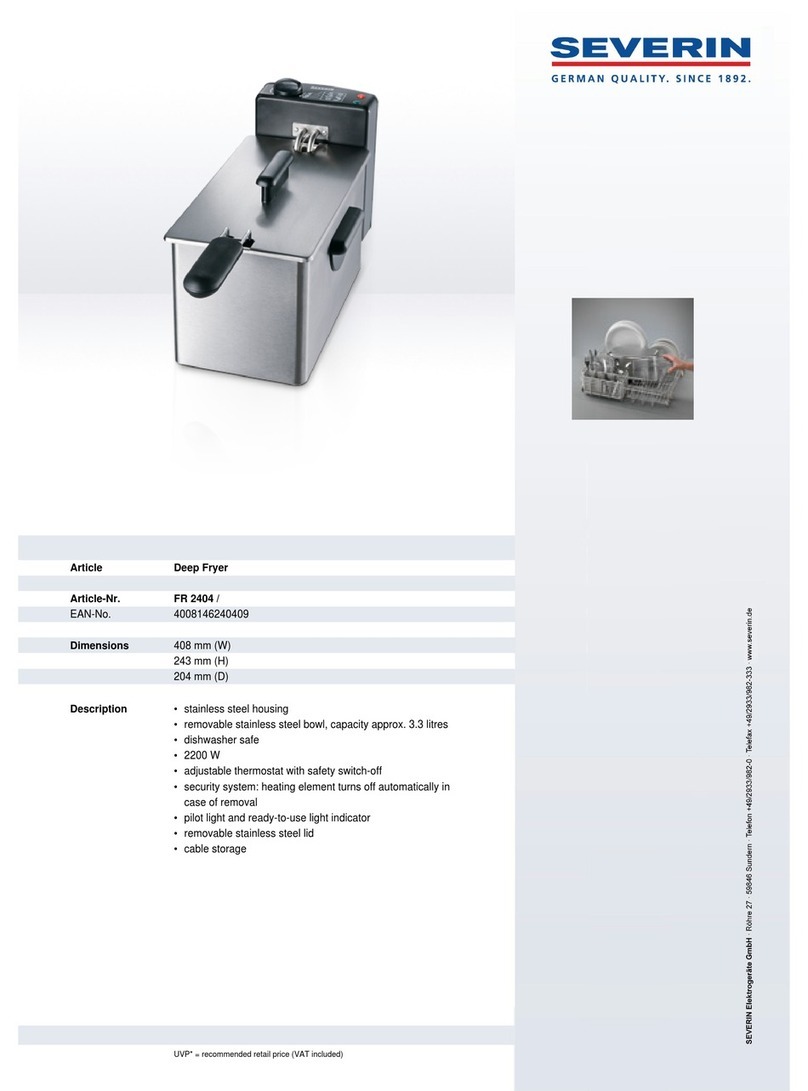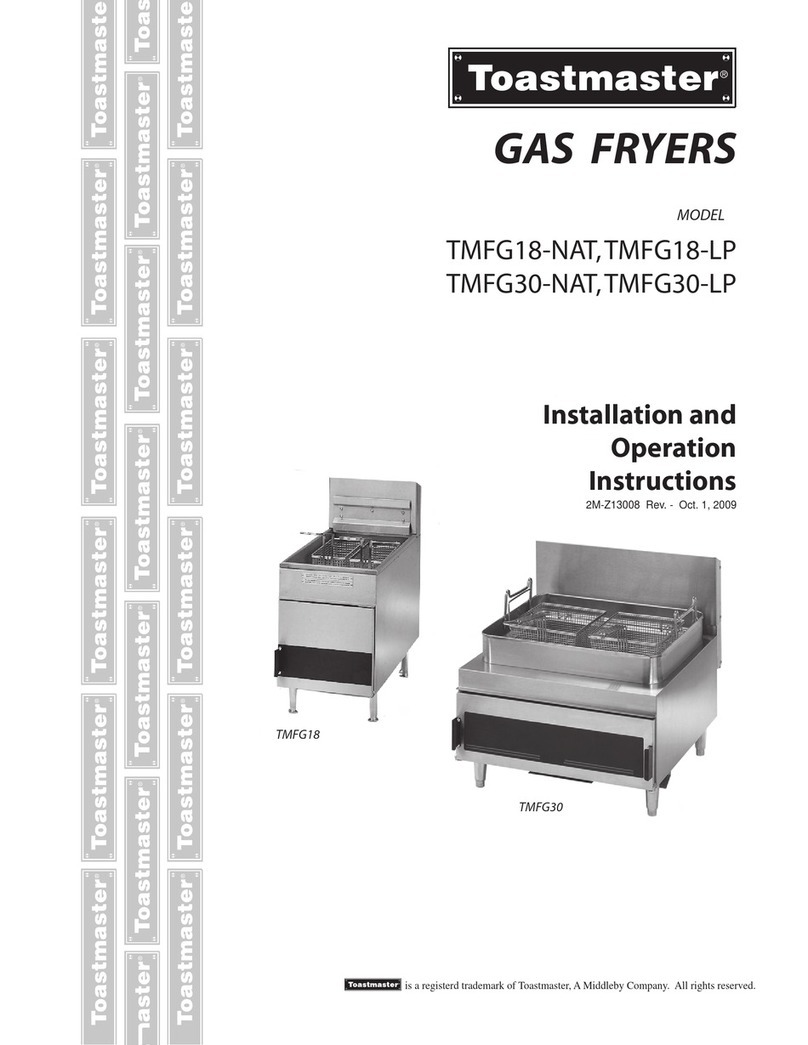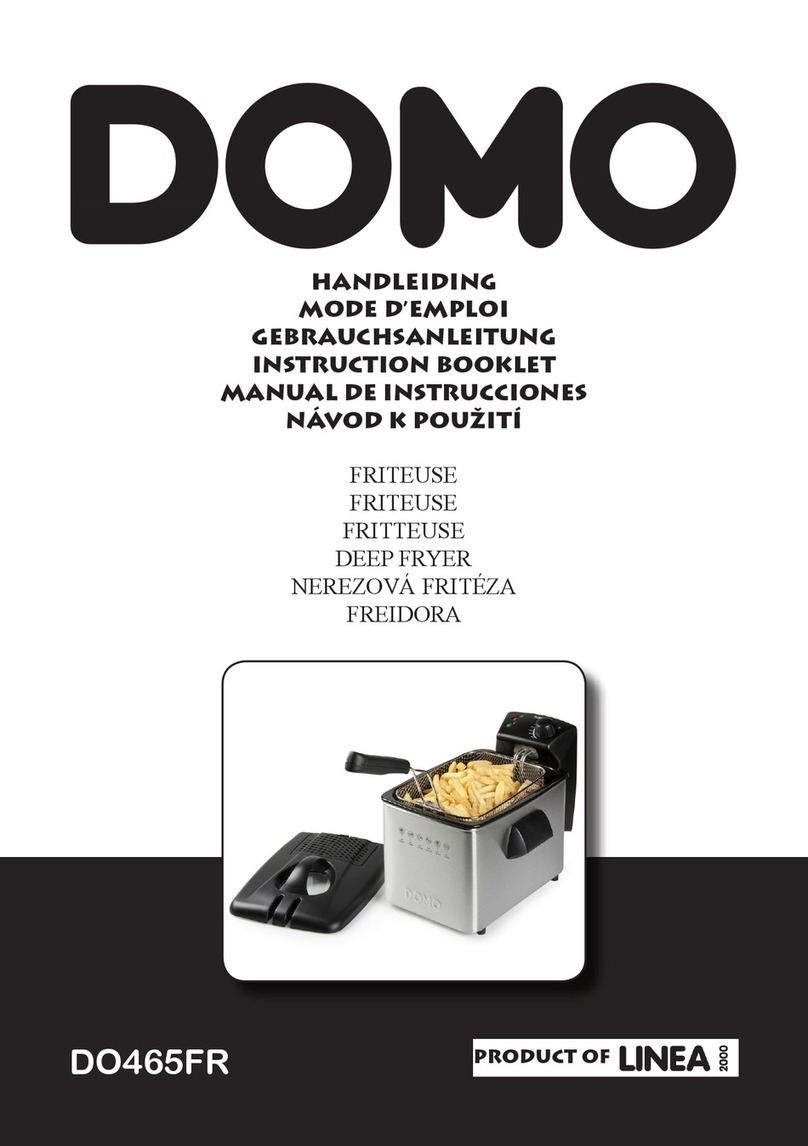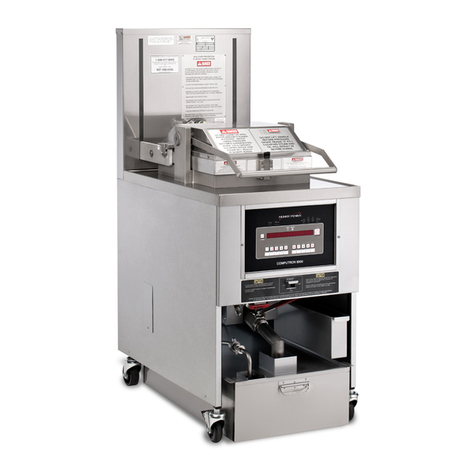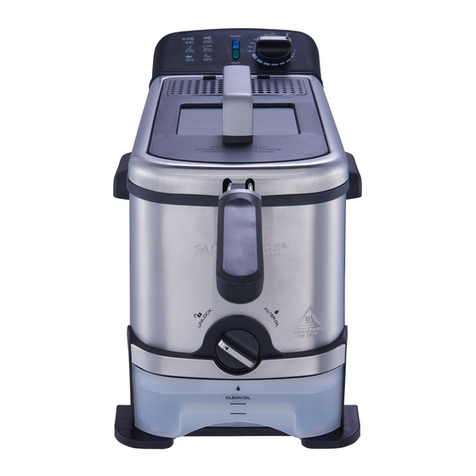6
Installation Requirements
NOTE:
• It is most important that this appliance is installed correctly and that operation is
correct before use. Installation shall comply with local gas, electrical and health and
safety requirements.
• This appliance shall be installed with sufficient ventilation to prevent the occurrence
of unacceptable concentrations of health harmful substances in the room, the
appliance is installed in.
Blue Seal 'Vee-Ray' HPO Fryers are designed to provide years of satisfactory service, and correct
installation is essential to achieve the best performance, efficiency and trouble-free operation.
This appliance must be installed in accordance with National installation codes and in addition, in
accordance with relevant National / Local codes covering gas, electrical, fire and health and safety.
AUSTRALIA: - AS5601 - Gas Installations.
NEW ZEALAND: - NZS5261 - Gas Installation.
Australia / New Zealand: - AS / NZS3000 - Wiring Rules.
Installations must be carried out by authorised persons only. Failure to install equipment
to relevant codes and manufacturers specifications in this section will void the warranty.
Components having adjustments protected (e.g. paint sealed) by manufacturer are only
allowed to be adjusted by an authorised service agent. They are not to be adjusted by the
installation person.
Unpacking
• Remove all packaging and transit protection from the appliance, including all protective plastic
coating from the door, outer panel and exterior stainless steel panels.
• Check equipment and parts for damage. Report any damage immediately to the carrier and
distributor.
• Report any deficiencies to the distributor who supplied the appliance.
• Check that the available gas supply is correct to that shown on the rating plate located on the front
bottom corner of the right hand side panel.
• Check that the following parts have been supplied with the appliance:-
GT60HPO
Baskets 2
Basket Grids 1
Adjustable Legs 2
Flue Diverter 1
Location
1. Installation must allow for a sufficient flow of fresh air for the combustion air supply. Combustion
air requirements:-
2. Installation must include adequate ventilation means, to prevent dangerous build up of combustion
products.
3. Never directly connect a ventilation system to the appliance flue outlet.
4. A minimum of 610 mm clearance must be maintained from the flue outlet to any above surface.
5. Position the appliance in its approximate working position.
6. All air for burner combustion is supplied from underneath the unit. The legs must always be fitted
and no obstructions placed on the underside or around the base of the unit, as obstructions will
cause incorrect operation and / or failure of the appliance.
Installation
Combustion Air Requirements:
Natural Gas 36 m3/hr
LPG 38 m3/hr

